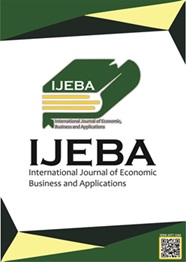Abstract
The increase pressure on marine capture fisheries due to rising demand for seafood, growing population, and a rapid increase in fisheries exploitation, brought about a decline in productivity of many fisheries.Last issues of ocean degradation were related to; overfishing, pollution, habitat destruction (coral reef). FAO (2008) reported that 32% of fish stocks are ove-rexploitated, depleted or recovering from depletion, and this figure is rising every year.This unsustainability of marine and coastal ecosystem were related to overfishing, pollution and waste, habitat destruction (coral reef), climate change, and loss of habitat and biodiversity. Aware of those issues and threats the productive and valuable ocean area lies at risk. Therefore, a concept of Ecosystem Based-Management (EBM) was introduced. The approach lays out a series of principles to guide management toward long-term sustainability of marine and coastal management. Further beyond the sustainability,the term “blue economy” has been used by the Pacific Small Island Developing States Perspective (PSIDS). in effort to highlight the importance of conservation and sustainable use of marine resources.
Keywords
Blue Economy, Coastal Ecosystem, Marine Conservation
References
The “Blue Economy”: A Pacific Small Island Developing States Perspective. Rio+20/Pacific/2011/2-2(rev-1)
FAO (2011) A Blue Print for Ocean and Coastal Sustainability. IASD (Report) on UN Conference on Sustainability Development (RIO+20)
IUCN, 1097. World Commission on Environment and Development.
The world Commission on Environment & Development 1987. Our Common Future,nonymous, 2002. ProfilKelautan, Perikanan Dan Pertanian Kota Batam. DinasKelautan.





.png)
.png)
.png)


